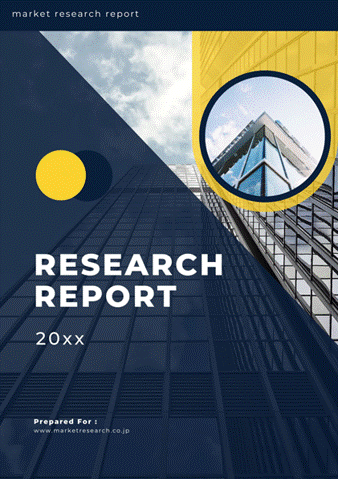 | • レポートコード:MRC2303B093 • 出版社/出版日:Mordor Intelligence / 2023年3月 • レポート形態:英文、PDF、141ページ • 納品方法:Eメール(受注後2-3営業日) • 産業分類:医薬品 |
| Single User | ¥712,500 (USD4,750) | ▷ お問い合わせ |
| Corporate License | ¥1,312,500 (USD8,750) | ▷ お問い合わせ |
• お支払方法:銀行振込(納品後、ご請求書送付)
レポート概要
| Mordor Intelligence社の市場調査書では、世界の痙縮治療市場規模が予測期間中に年平均10.1%上昇すると推測されています。本調査書では、痙縮治療の世界市場を広く調査・分析をし、イントロダクション、調査手法、エグゼクティブサマリー、市場動向、薬剤クラス別(ベンゾジアゼピン、αアドレナリン作動薬、ボツリヌストキシン、その他)分析、疾患別(多発性硬化症(MS)、脳性麻痺(SP)、外傷性脳損傷(TBI)、その他)分析、投与経路別(経口、非経口)分析、エンドユーザー別(小児、大人)分析、地域別(アメリカ、カナダ、メキシコ、ドイツ、イギリス、フランス、イタリア、スペイン、中国、日本、インド、オーストラリア、韓国、中東、南アフリカ、ブラジル、アルゼンチン)分析、競争状況、市場機会・将来動向などを整理しています。また、本書には、Medtronic Plc、Sun Pharmaceuticals Industries Ltd、Saol Therapeutics Inc、Piramal Enterprises Ltd、Par Pharmaceuticals LLC、Allergan plc、Ipsen、F. Hoffmann-La Roche Ltd、US WorldMeds LLC、Taj Pharmaceuticals Limitedなどの企業情報が含まれています。 ・イントロダクション ・調査手法 ・エグゼクティブサマリー ・市場動向 ・世界の痙縮治療市場規模:薬剤クラス別 - ベンゾジアゼピンの市場規模 - αアドレナリン作動薬の市場規模 - ボツリヌストキシンの市場規模 - その他痙縮治療の市場規模 ・世界の痙縮治療市場規模:疾患別 - 多発性硬化症(MS)における市場規模 - 脳性麻痺(SP)における市場規模 - 外傷性脳損傷(TBI)における市場規模 - その他疾患における市場規模 ・世界の痙縮治療市場規模:投与経路別 - 経口型痙縮治療の市場規模 - 非経口型痙縮治療の市場規模 ・世界の痙縮治療市場規模:エンドユーザー別 - 小児における市場規模 - 大人における市場規模 ・世界の痙縮治療市場規模:地域別 - 北米の痙縮治療市場規模 アメリカの痙縮治療市場規模 カナダの痙縮治療市場規模 メキシコの痙縮治療市場規模 … - ヨーロッパの痙縮治療市場規模 ドイツの痙縮治療市場規模 イギリスの痙縮治療市場規模 フランスの痙縮治療市場規模 … - アジア太平洋の痙縮治療市場規模 中国の痙縮治療市場規模 日本の痙縮治療市場規模 インドの痙縮治療市場規模 … - 南米/中東の痙縮治療市場規模 南アフリカの痙縮治療市場規模 ブラジルの痙縮治療市場規模 アルゼンチンの痙縮治療市場規模 … ・競争状況 ・市場機会・将来動向 |
The spasticity Treatment market studied was anticipated to grow with a CAGR of nearly 10.1% during the forecast period. The major factors attributing to the growth of the market are a rise in prevalence of multiple sclerosis, cerebral palsy, and encephalitis across the geographical locations compared to previous years. For instance, according to fact sheet published by The American Association of Neurological Surgeons in 2020, more than an estimated 12 million cases of spasticity were recorded worldwide. Also, cerebral palsy (CP) was identified as the leading cause of spasticity affecting more than 80 percent of people with the disorder demanding an efficient treatment driving the growth of the global spasticity drugs market.
Spasticity Drugs Market Trends
Oral Route Segment is Expected to Hold the Major Market Share in the Spasticity Treatment Market
The oral route segment is expected to account for the largest held the largest of the spasticity drugs market. The dominance can be attributed to the increased usage of these medications owing to ease of administration that helps the individual in medication when spasticity starts affecting the daily muscle functioning. It does not require a highly skilled health care professional for drug administration. Also, an increased demand for combination products such as benzodiazepines, imidazole, and gamma-amino butyric acid analogs fuel the global spasticity Treatment market during the forecast period.
North America Dominates the Market and Expected to do Same in the Forecast Period.
North America is expected to dominate the spasticity drugs market owing to the rising number of cases with various traumatic brain injuries, cervical dystonia, and muscular atrophy causing spasticity. Also, an increased prevalence of rare diseases such as ALS, PKU etc., and more number of elderly population due to presence of baby boomers during forecast period in the U.S. Thus, due to above mentioned factors, U. S. holds the major revenue share of market in North America contributes to the significant revenue share. According to the ALS Association statistics, in 2019, about 15 new people were diagnosed with ALS every day in the U.S. that leads to spasticity in muscles. Launch of new products by key players with accelerated drug approval initiative by the USFDA to develop drugs for rare diseases and advanced healthcare infrastructure fuel the market. Furthermore, rise in health awareness among public with government initiatives to create awareness in people are likely to create more opportunities in the market. Also, rise in disposable income, drive the spasticity drugs market growth in the region over the forecast period.
Spasticity Drugs Market Competitor Analysis
The spasticity Treatment market is moderately competitive and consists of several major players. In terms of market share, few of the major players currently dominating the market are developing new products to address unmet challenges in the market. In January 2020, Ipsen received approval for Dysport by the UK’s Medicines and Healthcare Products Regulatory Agency (MHRA). The Dysport is a clostridium botulinum type A toxin-haemagglutinin complex is used for the symptomatic treatment of focal spasticity of upper limbs in children with cerebral palsy. The product was earlier approved in major geographies including United States, the recent approval for the sales in UK is expected to have a positive impact on the global market growth. Some of the companies which are currently dominating the market are Medtronic Plc, Piramal Enterprises Ltd, Allergan plc, Ipsen, and F. Hoffmann-La Roche Ltd.
Additional Benefits:
- The market estimate (ME) sheet in Excel format
- 3 months of analyst support
1 INTRODUCTION
1.1 Study Deliverables
1.2 Study Assumptions
1.3 Scope of the Study
2 RESEARCH METHODOLOGY
3 EXECUTIVE SUMMARY
4 MARKET DYNAMICS
4.1 Market Overview
4.2 Market Drivers
4.2.1 Rise in Awareness Programs and Adoption of Novel Technologies
4.2.2 Launch of Advanced Therapeutics, and Increased Affordability
4.3 Market Restraints
4.3.1 High Cost of Treatment
4.3.2 Stringent Regulatory Framework
4.4 Porter’s Five Force Analysis
4.4.1 Threat of New Entrants
4.4.2 Bargaining Power of Buyers/Consumers
4.4.3 Bargaining Power of Suppliers
4.4.4 Threat of Substitute Products
4.4.5 Intensity of Competitive Rivalry
5 MARKET SEGMENTATION
5.1 Drug Class
5.1.1 Benzodiazepines
5.1.2 Alpha2-adrenergic Agonists
5.1.3 Botulinum Toxins
5.1.4 Others
5.2 Indication
5.2.1 Multiple Sclerosis (MS)
5.2.2 Cerebral Palsy (CP)
5.2.3 Traumatic Brain Injury (TBI)
5.2.4 Others
5.3 Route of Administration
5.3.1 Oral
5.3.2 Parenteral
5.4 End-user
5.4.1 Pediatrics
5.4.2 Adults
5.5 Geography
5.5.1 North America
5.5.1.1 United States
5.5.1.2 Canada
5.5.1.3 Mexico
5.5.2 Europe
5.5.2.1 Germany
5.5.2.2 United Kingdom
5.5.2.3 France
5.5.2.4 Italy
5.5.2.5 Spain
5.5.2.6 Rest of Europe
5.5.3 Asia Pacific
5.5.3.1 China
5.5.3.2 Japan
5.5.3.3 India
5.5.3.4 Australia
5.5.3.5 South Korea
5.5.3.6 Rest of Asia-Pacific
5.5.4 Middle East
5.5.4.1 GCC
5.5.4.2 South Africa
5.5.4.3 Rest of Middle East
5.5.5 South America
5.5.5.1 Brazil
5.5.5.2 Argentina
5.5.5.3 Rest of South America
6 COMPETITIVE LANDSCAPE
6.1 Company Profiles
6.1.1 Medtronic Plc
6.1.2 Sun Pharmaceuticals Industries Ltd
6.1.3 Saol Therapeutics Inc
6.1.4 Piramal Enterprises Ltd
6.1.5 Par Pharmaceuticals LLC
6.1.6 Allergan plc
6.1.7 Ipsen
6.1.8 F. Hoffmann-La Roche Ltd
6.1.9 US WorldMeds LLC
6.1.10 Taj Pharmaceuticals Limited
7 MARKET OPPORTUNITIES AND FUTURE TRENDS